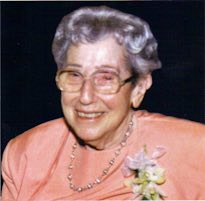A groundbreaking scientist in several important areas of biological study, Mildred Cohn pioneered research that helped form the scientific understanding of mechanisms of enzymatic reactions and the methods of studying them. She was born in 1913 in New York City to Russian immigrant parents and was educated in the city’s public schools.
Cohn earned her bachelor of arts degree from Hunter College in 1931 and her Ph.D. in chemistry from Columbia University in 1937. It was at this point that Cohn shifted fields from physical to biological chemistry. She served as the first female research associate in the laboratory of Vincent du Vigneaud at Cornell Medical College from 1938-1946.
In 1946, Cohn moved to the biochemistry department of Washington University in St. Louis, where she introduced the use of isotopic oxygen 18 to study metabolic processes and enzyme mechanisms. She later applied nuclear magnetic resonance (NMR) and electron paramagnetic resonance (EPR) to investigate metabolism and metabolic intermediates.
In 1960, Cohn accepted an associate professorship at the University of Pennsylvania, and in 1961, became Professor of Biochemistry and Biophysics. She continued at the university until 1982. In 1971, Cohn chaired a faculty committee on The Status of Women on the Faculty. The report released by the committee led to many positive changes for female professors and faculty members.
Following her retirement from the University of Pennsylvania, Cohn served as a senior member of the Fox Chase Cancer Center. She returned to research work at the University of Pennsylvania on a part time basis and continued until 1998.
Cohn published more than 150 scientific papers and received several awards for her pioneering work on magnetic resonance in biological systems. Most notably, Cohn received the National Medal of Science in 1982 in biological sciences for “pioneering the use of stable isotopic tracers and nuclear magnetic resonance spectroscopy in the study of the mechanisms of enzymatic catalysis.” She was the first female biochemist to receive the National Medal of Science.

